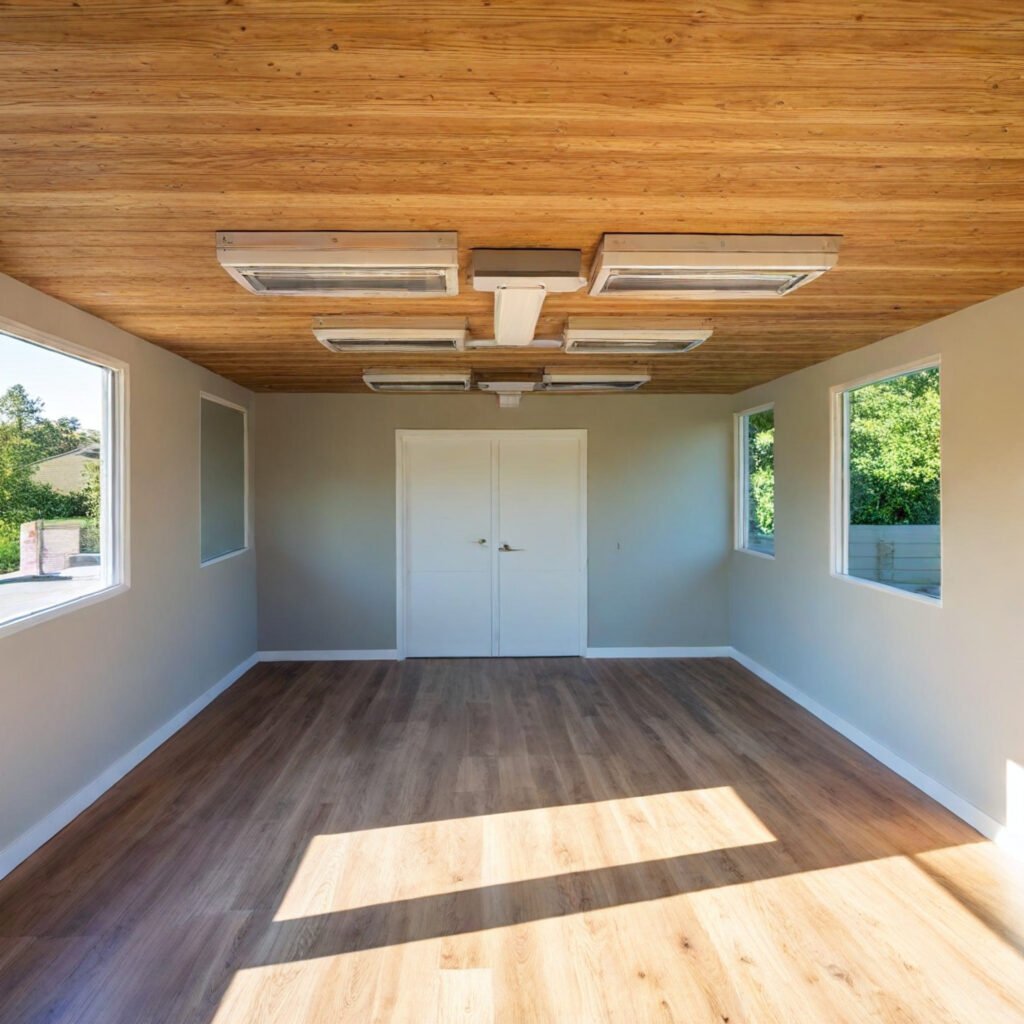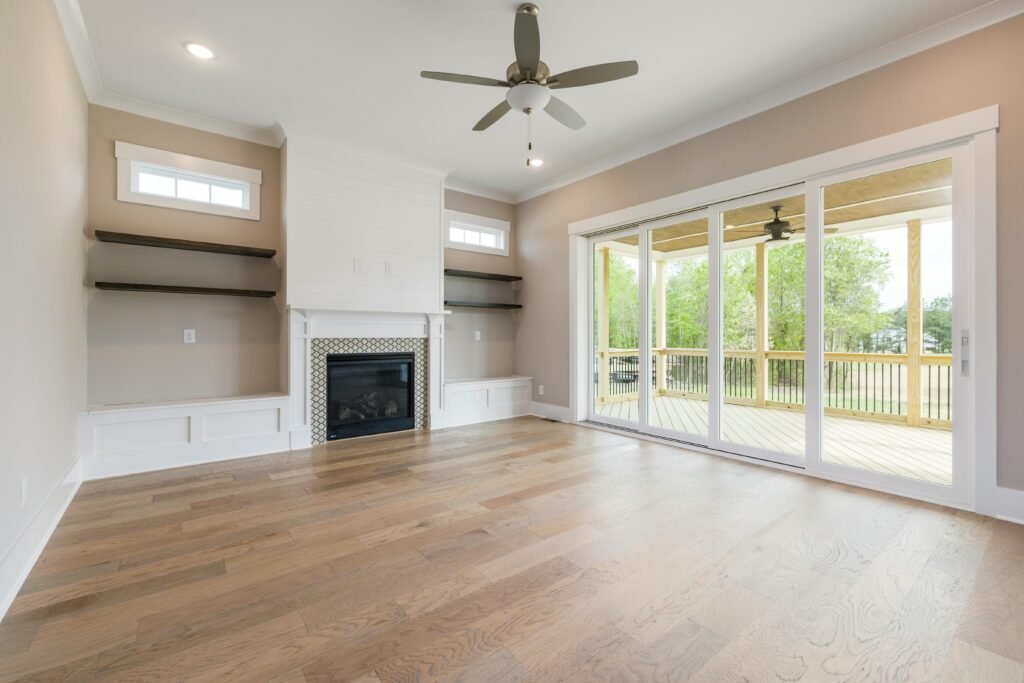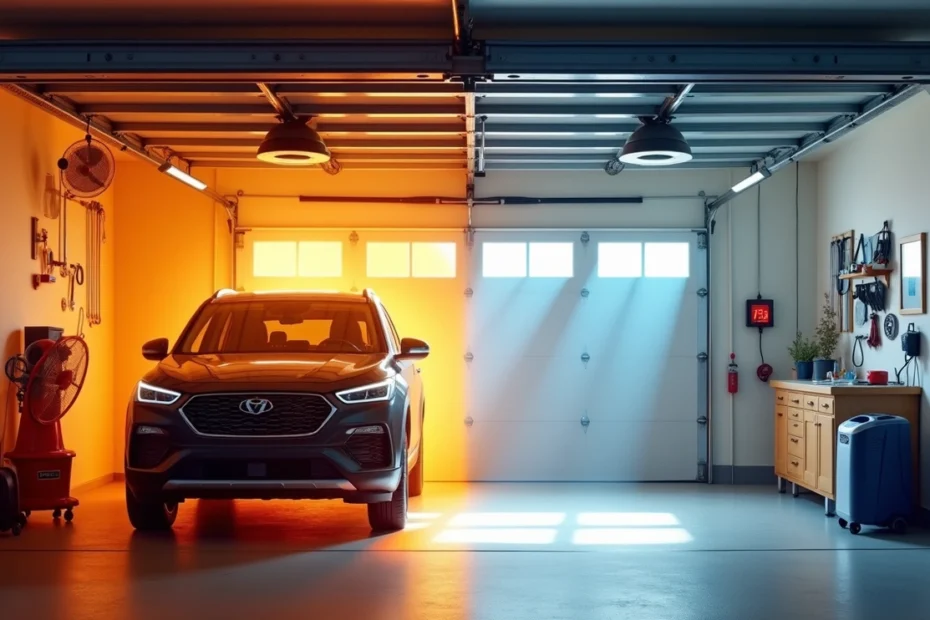Your garage can be 10-18°F (5-10°C) warmer than outside temperatures without air conditioning. Learning how to keep your garage cool in summer is a vital part of home maintenance. Hot days become problematic if you spend your free time in the garage.
Working on projects or organizing belongings becomes challenging in an uncomfortably hot space. The good news is that affordable cooling solutions can make a real difference to your garage’s temperature. The best cooling method depends on your needs and budget. You can start with basic airflow improvements or invest in better insulation. A well-insulated garage stays cooler during summer months and helps reduce your HVAC system’s workload, which leads to lower energy costs.
This piece outlines eight proven ways to cool your garage in 2025. We’ve included extra tips to help you get the most out of each method. Our solutions range from simple DIY projects to advanced cooling systems that fit every budget and requirement.
Why Garages Get So Hot in Summer
“Garages can get unbearably hot in the summer since they don’t usually have good insulation or ventilation.” — Carjon Air Conditioning & Heating, Inc., Licensed HVAC contractor (company statement)
Your garage can become unbearably hot during the summer months for several reasons. You can cool it down better when you know what causes the heat buildup and how to implement budget-friendly garage cooling solutions.
Sun exposure and garage orientation
Your garage’s orientation affects its temperature by a lot. Garages that face west or south get direct sunlight for long periods, and western-facing ones catch the most intense afternoon heat. This extended sun exposure can warp surfaces and put stress on moving parts. The heat doesn’t go away quickly either – the pavement and walls around your garage door keep radiating stored heat well into the evening.
Lack of ventilation and insulation
Bad ventilation is the biggest problem that turns garages into saunas during summer. Hot air gets stuck with nowhere to go, especially in garages without windows. This is why garages without air conditioning get 10-15 degrees warmer than the outside temperature.
Poor insulation lets warm air sneak in while cool air escapes, making it hard to keep comfortable temperatures. This creates a heat trap that makes your garage much warmer than the area around it.
Heat from parked vehicles
Your car adds a lot of heat to your garage. The engine, tires, and other parts stay hot for hours after you park. This extra warmth makes the already high temperatures even worse. When you park a recently driven car inside, you’re basically bringing a large heat source into your garage that takes hours to cool down.
Dark exterior colors and materials
The color of your garage door and exterior makes a surprising difference in temperature control. Dark colors, especially black, soak up much more solar radiation than lighter ones – that’s simple physics. Dark garage doors can get much hotter on the surface than light-colored ones in the same conditions during summer.
This heat absorption doesn’t just warm up the door – it raises the temperature throughout your garage. Light-colored doors work better because they bounce sunlight away instead of absorbing it, which helps keep your garage cooler.
8 Best Garage Cooling Solutions for 2025
“Fans are essential in any garage, especially during the sweltering summer months. They not only cool us down but also keep air circulating, prevent stagnation, and maintain proper ventilation.” — Car and Driver Editors, Automotive experts and product reviewers
Ready to cool down that hot garage? Here’s how to turn your sweltering space into a comfortable workshop.
1. Park your car outside after driving
Cars hold a lot of heat after being driven and need hours to cool down. A hot car in your garage will make the space even hotter as heat comes off the engine, tires, and other parts. Your best bet is to leave your car in a shaded spot outside until it cools before bringing it in.
2. Use your garage during cooler hours
Smart timing makes a big difference. Your garage is most comfortable in early mornings before 11 AM when it’s cooler outside. Open the garage door quickly to let out any trapped heat from yesterday. Stay away from garage work between 3-6 PM – that’s when temperatures hit their peak.
3. Add fans for better airflow
Fans are an economical way to cool things down without breaking the bank on installation. Place multiple fans in key spots – one pointed at where you work and another near an open window or door to push the hot air out. Taller garages work well with ceiling fans, while smaller spaces do better with floor or tower fans.
4. Choose light-colored garage doors
Your garage door’s color plays a huge role in heat. Dark colors soak up 90% of the sun’s heat, but white doors only absorb 20-30%. A fresh coat of light, reflective paint on your garage door can keep heat buildup low throughout the day.
5. Install a ventilation system
Good ventilation moves hot air out and brings cooler air in. You can install:
- Passive roof vents that use little energy
- Active ventilation with exhaust fans that cool better
- Wall vents across from the garage door
6. Use air conditioning (if budget allows)
Nothing beats air conditioning for cooling, though it costs more. You’ve got options:
- Mini-split systems cool specific areas without ductwork
- Portable units you can move around
- Window units work great in smaller garages
7. Insulate walls, ceiling, and doors
Good insulation blocks heat transfer by creating a thermal barrier. Walls need insulation rated R-13 to R-21, while ceilings should be R-30 to R-40. Garage doors with polyurethane or polystyrene insulation help control temperature and save energy.
8. Use a dehumidifier in humid climates
Humidity makes everything feel hotter. A dehumidifier keeps moisture levels between 30-50%, which makes the space more comfortable. It also stops mold growth, protects your stored items, and cuts down on condensation when you have good airflow.
Extra Tips to Keep Your Garage Cool

These extra tips will help keep your garage comfortable all summer long, beyond the basic cooling strategies.
Declutter to improve airflow
Your garage’s airflow suffers when clutter takes over and creates hot spots. The air moves better when you clear unnecessary items from the floor space. Your garage’s ventilation gets blocked by stacked boxes and bulky items that eat up valuable space. You can keep your floor clear and improve air movement by adding storage solutions like cabinets, slatwall panels, and overhead racks.
Seal gaps and cracks
Heat sneaks into your garage through tiny openings around windows and doors. Window frames stay cooler when you fill gaps with silicone caulk. Summer heat turns your garage into an oven without proper sealing. The temperature inside can rise a lot even through tiny cracks.
Use reflective window coverings
South-facing garage windows stay cooler with reflective window film that blocks heat and UV rays. These coverings work like sunglasses for your garage and cut down solar heat by a lot.
Install weatherstripping
Quality weatherstripping creates an airtight seal around your garage door. Cool air stays in and hot air stays out when weatherstripping is installed correctly. The best results come from leaving about 1⁄8 inch space at weatherstripping joints.
Add shade with trees or awnings
Your garage stays cooler naturally when you plant shade trees in strategic spots. Paper birch or tulip poplar trees are great choices that grow quickly. You can also get immediate shade from awnings or canopies instead of waiting for trees to grow.
Cost vs. Benefit: What’s Worth It?

Smart garage cooling investments balance upfront costs with long-term benefits. Let’s get into which options give you the best value for your money.
Low-cost DIY options
Budget-friendly solutions cost less than $100 and give quick relief. A smart fan setup ($20-$50) creates cross-ventilation that cuts temperatures by 5-7°F. Heat-blocking window films ($25-$40) still let light through. Simple weatherstripping and gap sealing ($15-$30) keeps hot air out. These affordable options work better together – to cite an instance, a clutter-free garage with well-placed fans helps air move more freely.
Mid-range upgrades
Solutions between $100-$500 make a real difference in cooling. Ceiling exhaust fans ($150-$300) pull hot air out quickly, while insulated garage door panels ($200-$500) block heat effectively. Portable evaporative coolers ($200-$400) are affordable alternatives to standard AC units and can lower temperatures by 10-15°F in dry climates.
High-end cooling systems
Quality solutions above $500 deliver professional results. Mini-split AC systems ($1,500-$4,000) cool specific areas without needing ductwork. Complete garage insulation packages ($800-$1,500) keep temperatures steady throughout the year. These systems cost more upfront but are a complete solution to keep garages cool even in extreme heat.
Energy savings over time
Smart investments pay off in the long run. A well-insulated garage cuts cooling costs by 10-30% each year. High-efficiency cooling systems pay for themselves through reduced utility bills in 3-5 years. The best results come from combining different approaches – using both insulation and ventilation gives you the quickest way to cool your garage while maximizing your investment returns.
Conclusion
A cool garage in summer is crucial for comfort and safeguarding stored items. Heat can make working in your garage unbearable and harm temperature-sensitive items. The good news is you’ll find solutions that fit any budget or situation.
You’ll get better results by combining different cooling methods instead of using just one. To name just one example, good insulation and smart fan placement work substantially better together than either option on its own. On top of that, you can make a real difference without spending much by parking hot cars outside, picking light-colored doors, and clearing out clutter.
Start with budget-friendly fixes like weatherstripping, reflective window covers, and proper fan setup before you think about pricier upgrades. Once you have these simple steps in place, you can assess if bigger investments in ventilation systems or air conditioning suit your needs and budget.
Note that a cool garage protects your belongings. Your tools, stored items, and vehicles will serve you longer when they’re not exposed to big temperature swings. This makes these improvements a smart long-term investment, not just a comfort upgrade.
Your local climate should shape your cooling strategy. A dehumidifier with good air movement works best in humid areas, while evaporative coolers are very effective in dry regions. Your location and garage’s position ended up determining which mix of methods will work best. These cooling strategies will change your hot garage into a comfortable workspace, whatever the temperature outside.
